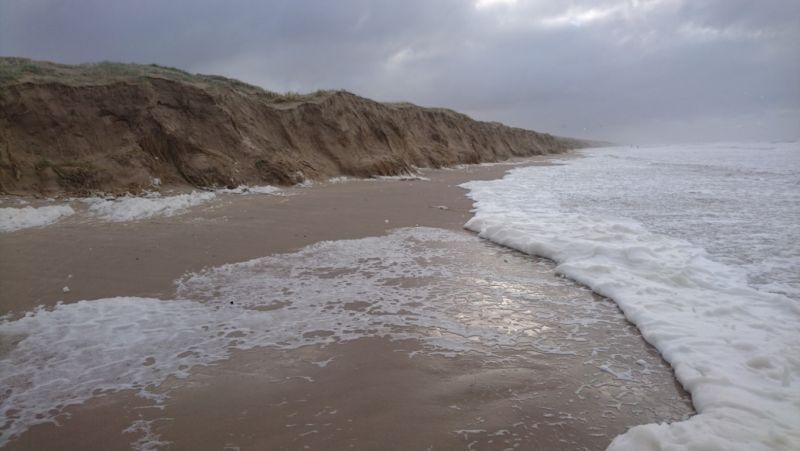T.D. Price1*, R.C. de Zeeuw2, B.T. Grasmeijer1,3, A.M. van Eijk1, F. Gulden2, M.C.G. van Maarseveen1,N. Smit2, H. Markies1
1 Utrecht University, This email address is being protected from spambots. You need JavaScript enabled to view it.
2 Shore Monitoring & Research, This email address is being protected from spambots. You need JavaScript enabled to view it.
3 Deltares, This email address is being protected from spambots. You need JavaScript enabled to view it.
Introduction
Along wave-dominated coasts, sandy dunes can erode severely during extreme storms. The volume of eroded dune sand has been observed to vary strongly alongshore. Recent observations show that this alongshore variation in dune erosion may relate to alongshore depth variations of nearshore crescentic sandbars, where shallower areas supposedly reduce the wave attack on the dune. On the other hand, other observations suggest that the pre-storm dune morphology may provide an alongshore-variable sand buffer against wave attack, leading to alongshore-variable dune erosion. The latter suggests that alongshore-variable dune erosion does not require alongshore variability in wave attack. Despite observations of alongshore-variable dune erosion and morphological coupling within the sandbar-beach-dune system, concurrent measurements of the nearshore wave field are lacking. With our research, we aim to quantify the alongshore variability in the wave field reaching the dunes during storms, and investigate its correlation with alongshore-variable (changes in) bed levels.
Methods
During the winters of 2017/2018 and 2018/2019 we deployed 7 pressure sensors spaced 250 m apart, along a 1.5-km stretch of beach on the Dutch coast (Egmond aan Zee). All sensors were located above the high tide water level, each at different elevation levels (maximum 1 m difference). We monitored marine forecasts for approaching storms, and deployed 7 additional pressure sensors 40 m seaward of each initial pressure sensor before the storm surge arrived. During the study period the sensors were submerged several times during storm surges of 1-2 m. Full bathymetric (sonar-equipped jetski) and topographic (mobile laser scanner) surveys were done before and after the storms.
Results
The bed level measurements show a distinct alongshore variability in morphological response to storms across the entire bar-beach dune system. At the meeting we will present our wave data analysis obtained during storm surges and aim to discuss our measurement strategy.

Figure 1 Dune erosion near Egmond aan Zee, observed after the storm of 8 January 2019 (photo: T.D. Price).










